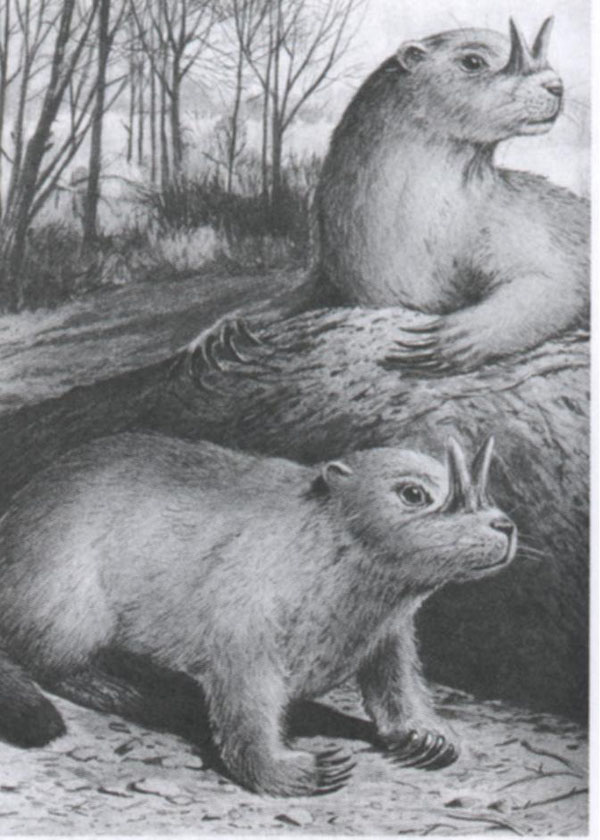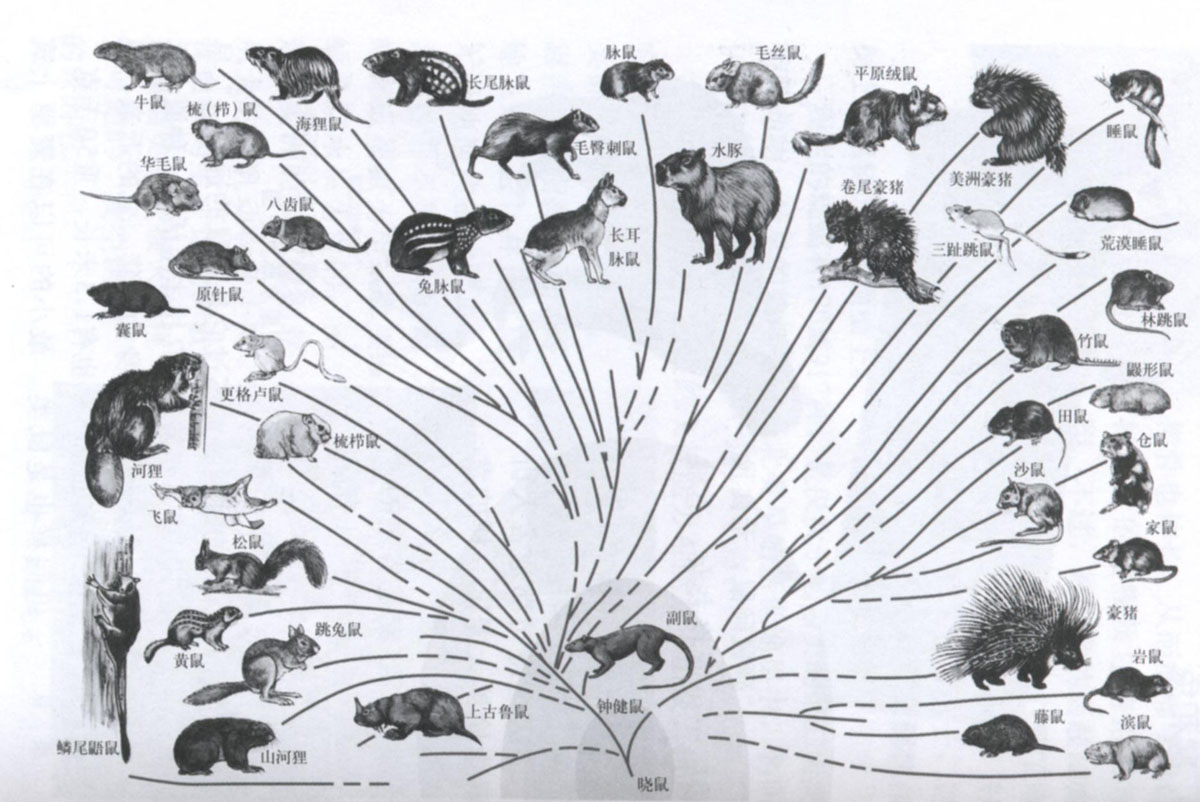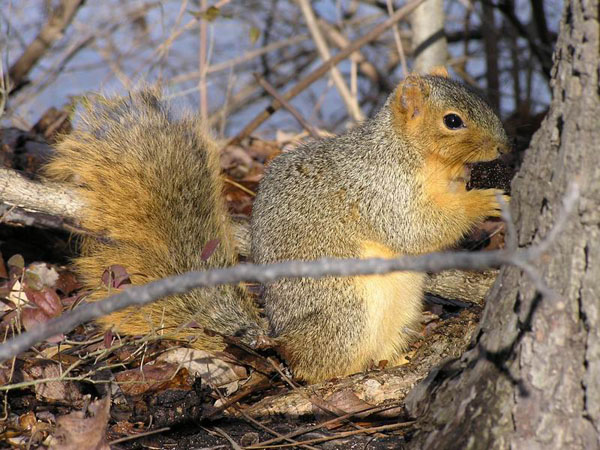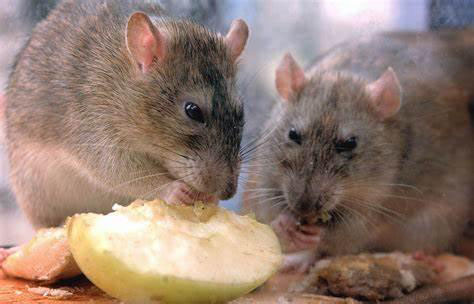"The big rat, the big rat, has no food for me!... The dying woman is suitable for that paradise."
"The rats in the official warehouse are as big as a bucket, and they won't leave even when someone opens a warehouse."
These verses were all used by the ancients to ridicule corrupt officials who were like rats stealing food. Is there really such a big rat? The answer is yes, "Not only that, there are rats as big as small rhinos in the world. But it is a distant relative of the house mouse." As early as more than 3 million years ago, in There is a kind of raw water guinea pig living in Uruguay, with a head as big as a bull and a body like a wild boar. Its close relative, the living South American capybara, is also 1.3 meters long and weighs 50 kilograms. But they are also rodents. The smallest ones can build nests on wheat ears and weigh only 20 grams.

Guru Rat
Animals like rats have vast magical powers. Since their birth on the earth 53 million years ago, there are now 1,814 species of 430 genera and 29 families living on the earth today, accounting for about 40% of the mammal genera and species in the world today. The number of individual rats is also staggering. It is said that one out of every six mammals in the world is a rat. Rats live in every corner of the world except Antarctica. There are rats that run on land, jerboas that jump, and zokors that burrow underground; there are beavers that live in the water, and there are flying squirrels that fly between trees. . Rats also vary greatly in shape and appearance, from cute little squirrels to annoying house rats to the Guru rat with horns on its head. But no matter how different they are, they are all classified into the same category in biology, called rodents. Their common feature is that they have a pair of large front teeth that grow throughout their lives and are constantly chewing (gnawing) things. These incisors keep growing, and if they are allowed to grow, the longer and longer incisors will make it impossible to close the mouth. This is why mice chew on wooden boxes - not to eat, but to grind them. It is said that some people raised domestic rats in porcelain jars and fed them soft food. After a few days, the rat's mouth was pushed up by its incisors and it could not close its mouth to eat and died. In fact, when rats eat, they use their incisors to bite off the food and then send it to the back for chewing with molars. At this time, the incisors are open. This feature is unique to rats. In order to facilitate chewing, the rat's canine teeth are gone, and the number of cheek teeth is also greatly reduced.
Rats are very important to human life. They steal food, spread plague, and destroy farmland and grasslands. But its fur is usable, and it reproduces quickly and in large numbers. People often use it as an experimental animal, calling it the "fruit fly among mammals."
The rodent population seems to wax and wane periodically with the abundance and decline of the food chain. Lemmings in Northern Europe usually live in mountains and grasslands. Every ten years or so, they migrate north in groups when food is scarce. When they cannot cross the Arctic Ocean, they jump into the sea en masse and drown in the sea. After the migration, the population was greatly reduced.
The various rodents are biologically divided into four major categories based on the structure of their teeth and masseter muscles: Eorodites (only one species remains in North America today - mountain beaver), Squirrels (including squirrels and beavers), Rats ( House mice, hamsters and jerboas) and guinea pigs (guinea pigs and capybaras). In recent years, molecular biology research has concluded that the South American guinea pig is less similar to other rodents than it is to primates or other mammals. Therefore, it is believed that the South American guinea pig is not a rodent, thus challenging the traditional concept of rodents. .

Rat family diagram
Eorodites flourished in the Paleogene, but were basically extinct when the earth cooled suddenly in the Oligocene. After the great hiatus, some living families appeared, such as beavers, squirrels, jerboas, and South American guinea pigs. Muridae is the largest group of animals and includes several major categories (subfamilies) such as hamsters, mice and voles. The most primitive is the hamster, which was discovered in the Eocene epoch nearly 40 million years ago and flourished in the Oligocene and Miocene epochs; it was gradually replaced when its descendants, rats, appeared 15 million years ago. . Today, there are about 120 genera and nearly 530 species in the subfamily Murinae in the world, while there are only 22 species in 5 genera and 22 species in the subfamily Hamsterinae. The vole subfamily is another descendant of hamsters, which appeared about 5 million years ago.
Due to the large number of rodent populations and rapid evolution, they are the most effective indicator fossils for determining the age of strata. Take the fossilized vole called Mouse as an example. In less than 3 million years, the teeth went from having roots to being rootless, and the patterns on the tooth surfaces also gradually changed. If you find which kind of model rat in the formation, you can infer the age of the formation.
The origin of rodents has been an unsolved problem for many years. In the past, it was always speculated that rodents originated from the primates of the Paleocene, using the early Eocene pararat in North America as a model. New materials discovered in my country in recent years have confirmed that rodents should have originated in Central Asia: the Oriental Oriental Rat in the Paleocene strata of Qianshan, Anhui is the ancestral type of rodents, and the Inner Mongolia Ophiodontus is the most primitive rodent.

squirrel
Since the 1920s, the zoological community has believed that rats and rabbits are not systematically related, and that rabbits may have originated from artiodactyls, ancient anklets, or carobans. It was not until the 1970s that the ancestor of the lagomorphs, the model rat rabbit, was discovered together with Xiaoshu in Qianshan, Anhui Province, and the genetic relationship between mice and rabbits was reaffirmed. Both were classified into the same category - superorder Rodentia. . Rabbits and mice both have a pair of rootless incisors, but rabbits also have a pair of small incisors behind the large incisors. Therefore, rabbits are also classified as diincisors, while rodents are classified as monoincisors.
There are only two families of Lagomorpha - Leporidae and Leporidae. There are 40 species in 9 genera of Leporidae today. They are large in size and have long ears. They excrete two kinds of feces: dry feces balls and wet feces. The wet feces is secreted from the long cecum and is rich in vitamins. After being excreted, it is eaten by rabbits. No loss of nutrients will occur. The domestic rabbits that are widely raised today are domesticated from European cave rabbits and have nothing to do with the wild rabbits living in my country. Burrowing rabbits burrow, and the rabbits are born in the nest. The newborn rabbits are naked and hairless, with their eyes closed. The hares in my country are all of the genus Lego and do not burrow. The young are dry on the ground, have hair, and open their eyes. They are born shortly after birth. Can run. There is only one genus of rats with no more than 20 species. They are small, with small round ears and short tails. They mostly live in grasslands and mountains. The earliest rabbit in the world is the Rhodon rabbit discovered in the Eocene of Henan, my country. .

Rats and rabbits are very successfully evolved groups of mammals, but most of them are harmful to human development. If human beings do not cherish and care for their living environment, then maybe the earth will be their world in a few years. This is not alarmist, because the reproductive capacity of these animals is astonishing, and their ability to adapt to the environment is also particularly strong.
animal tags: Rat rabbit rodent lagomorph squirrel hamster Leporidae hare
We created this article in conjunction with AI technology, then made sure it was fact-checked and edited by a Animals Top editor.